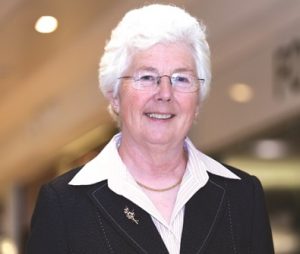The transformation of a power station has "made Yorkshire a world leader"

WITHIN the miles and miles of pipework that are responsible for transporting raw materials around the site of Drax power station as it gets transformed into electricity, it would be easy to miss two small orange tubes that pass over one of the internal roads.
Those two pipes were used the first time biomass was used as a fuel source to produce power for the grid.
In little more than a decade it has become much easier to see the role of biomass at Drax.
It isn’t the large pile of more than one million tonnes of coal that catches the eyes of visitors, but the four space-age domes that house the biomass material used in the two – soon to be three – generating units of the six on site that produce on average 8% of the country’s electricity.
Each dome is 50 metres high, and large enough to fit the Royal Albert Hall inside. But much less pomp and circumstance surrounds the structures which can hold up to 75,000 tonnes of biomass, which is abut 12 days of fuel for a converted generating unit that uses about 2.3m tonnes a year.
They form part of a £700m investment by Drax that will have funded not just the conversion of the three units and the associated biomass facilities, but also creating a new supply chain in the US.
“There’s a great story to tell here,” said Andy Koss, Drax Power’s chief executive. “I am very proud of what we have done. We have moved from being the biggest carbon emitter in the UK to being the biggest de-carbonisation project in Europe.
“We are taking out 12m tonnes of carbon a year when the third unit is up, the equivalent of removing 10% of the country’s cars off the road.”
Mr Koss has just been promoted to chief executive of Drax Power from his previous role of director of strategy as part of a restructure of the management team of the group, which includes supply business Haven Power and pellet production in the United States as well as Drax Power Station.
He summarises the benefits of biomass in three words – “renewable, reliable, affordable”.
The major volume of the 4.1m tonnes sourced in 2014 came from North America, with the US supplying 58% and Canada 22%, while continental Europe, from Portugal to Estonia, providing 17%.
About 100,000 tonnes of biomass pellets are created at a processing plant in Goole, fed by contracts with farmers and growers in Yorkshire and elsewhere in the UK.
Mr Koss said: “We are becoming increasingly dependent on countries like Russia and Iran – gas is coming from less stable regions. Security of supply is crucial and biomass is helping to enhance that.
“The biomass we are sourcing is from stable economies and there’s a huge surplus of material that is not being used.”
Biomass, he emphasised, is “low carbon, not zero carbon” and its impact needs to be measured from forest to furnace.
“We need to measure the carbon emissions at every step of the process,” said Mr Koss. “However we are saving 86% carbon compared with burning coal, which is clearly a huge benefit.”
Progress on such a scale requires long-term planning and investment, which is not always easy when energy policy is shaped by governments operating on much shorter timescales.
Mr Koss said: “We have always said the energy sector needs long-term policy certainty. We are making long-term investment decisions and we need certainty.
“Engaging the Government on a fourth unit conversion is going to be one of my key priorities.
Will all six units be converted? “That is aspirational,” he said. “It is possible to do all six long term.
“We need certainty on policy, and that’s an important part. The wider issue is around sustainability. There’s a discussion across the sector on the sustainability of biomass. We have shown that biomass can be sourced in a sustainable way.”
His primary aim is to ensure the long-term security and success of the plant.
“I genuinely think that without the change to biomass the plant would have a much more limited future,” added Mr Koss. “We have secured it until at least 2027, securing jobs here and at ports and on the railways. A lot of coal plants across UK will find it increasingly difficult to survive into the next decade.”
Drax “is a great Yorkshire success story”, he said, because of the way it has become “the world leader in using biomass in power stations”.
He added: “Future success for me is we have three, possibly four, units running on biomass, flexibly and reliably. I also want there to be wider recognition of the strategic value of this power plant, both by national government and wider stakeholders.”
In the reception area hangs a framed letter, handwritten by former energy minister Ed Davey, that thanked Drax for taking a risk – “a calculated risk, but nevertheless a risk”, said Mr Koss – in starting preparatory work on the conversion of the third unit.
Mr Davey wrote: “Thank you for being so far-sighted and so prepared to take a risk, even when Government wasn’t quite ready for you.”
Much of the last decade has required a series of risks and “brave decisions” at Drax, since those two pipes first got connected to one of the power station’s huge boilers.
“What we did know is that we were staring at a world where coal would be increasingly uneconomic and we had to do something to counteract that,” said Mr Koss.
“The decision to move to biomass was a relatively easy one given the world we were staring at.”









